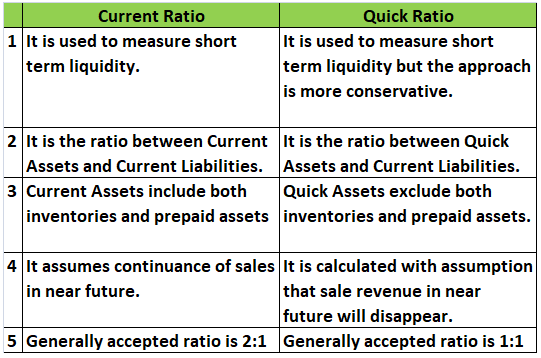Realisation account A realisation account is a nominal account prepared at the time of dissolution of a business. All the assets and liabilities except cash and bank balance are transferred to the realisation account. A realisation account is prepared to calculate the profit or loss on the dissoluRead more
Realisation account
A realisation account is a nominal account prepared at the time of dissolution of a business. All the assets and liabilities except cash and bank balance are transferred to the realisation account. A realisation account is prepared to calculate the profit or loss on the dissolution or closing of the firm.
All the assets are transferred to the debit of the realisation account and all the liabilities are transferred to the credit of the realisation account. When assets are sold, Cash A/c is debited and Reliastion A/c is credited and when liabilities are paid off, Cash A/c is credited and Realisation A/c is credited.
If the credit side exceeds the debit side of the realisation account, it results in profit. In contrast, if the debit side exceeds the credit side of the realisation account, it results in a loss. in case of profit, the Capital account is credited and in case of loss, the Capital account is debited.
The debit side of the realisation account
All the assets including Land and building, Plant and machinery, furniture, stock, debtor and investment are transferred to the debit of the realisation account and payment of outside liabilities is also recorded on the debit side of the realisation account. Payment made for dissolution expenses is also recorded on the debit side of the realisation account.
- Assets: All the assets including Land and building, Plant and machinery, Furniture, Stock, sundry debtors, and investments are transferred to the debit side of the realisation account. The debit balance of profit and loss balance is not transferred.
- Accounting entry for this is as follows:
Realisation A/c Dr…..
To Assets A/c …..
(All the assets transferred to the realisation account)
- Cash and bank A/c: Payment for the liabilities including sundry creditors, outstanding expenses, bills payable, loans and advances, bank overdrafts and cash credit is transferred to the debit side of the realisation account.
-
- Accounting entry for this is as follows:
Realisation A/c Dr…..
To Cash A/c …..
(Payment made for liabilities)
- Profit on realisation: If the credit side of the realisation account exceeds the debit side, it results in a profit then the capital account is credited.
-
- Accounting entry for this is as follows:
Realisation A/c Dr…..
To Capital A/c …..
(Being profit transferred to the capital account)
Credit side of realisation account:
All the liabilities and provisions are transferred to the credit side of the realisation account. Capital account of partners, profit and loss balance and loans from partners are not transferred. Sale proceeds of all the assets including Land and building, Plant and machinery, furniture, stock, debtor and investment are transferred to the credit side of the Realisation account.
Format for realisation Account is as under:
| Realisation A/c | |||
| Particulars | Amount | Particulars | Amount |
| To Land & Building | By Provision for Doubtful Debts A/c | ||
| To Plant & Machinery | By Sundry Creditors A/c | ||
| To Furniture | By Bills Payable A/c | ||
| To Debtors | By Outstanding Expenses A/c | ||
| To Goodwill A/c | By Bank Loan, Overdraft, Cash Credit A/c | ||
| To Investment A/c | By Bank/ Cash A/c (Assets realized): | ||
| To Bank/ Cash A/c (Liabilities Paid): | Land and Building | ||
| Sundry Creditors | Plant and Machinery | ||
| Bill Payable | Furniture | ||
| Outstanding Expenses | Stock | ||
| Bank Loan, | Debtors | ||
| Overdraft, | Bad Debts recovered | ||
| Cash Credit | Investment | ||
| To Bank/ Cash A/c | By Capital A/cs | ||
| (Realisation Expenses) | (assets taken over) | ||
| To Capital A/c | By Capital A/cs | ||
| (Realisation Expenses) | (Loss on Realisation) | ||
| To Capital A/cs | |||
| (Profit on Realisation) | |||
| Total | Total |





When the Accumulated depreciation account is not maintained, the journal entry for vehicle depreciation shall be Particulars Debit Credit Depreciation a/c Dr. (xxx) To Vehicle a/c (xxx) (Being DepreciationRead more
When the Accumulated depreciation account is not maintained, the journal entry for vehicle depreciation shall be
For example, let us assume that a vehicle (Bike) was purchased on 1st April 2019 with INR. 2,50,000, the rate of depreciation is 15% and also the Company follows the straight-line method of calculating depreciation.
Then the journal entries shall be,
The depreciation charge for the 1st Year
The depreciation charge for the 2nd Year
The depreciation charge for the 3rd Year
The respective ledger accounts for all three years are given below:
When the Accumulated depreciation account is maintained, the journal entry for vehicle depreciation shall be
Taking the above said example,
The depreciation charge for the 1st Year
The depreciation charge for the 2nd Year
The depreciation charge for the 3rd Year
The respective ledger accounts for all three years are given below:
See less